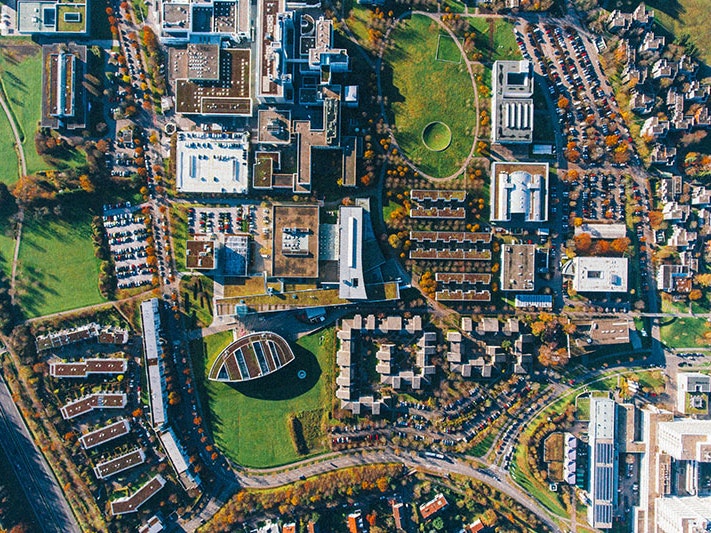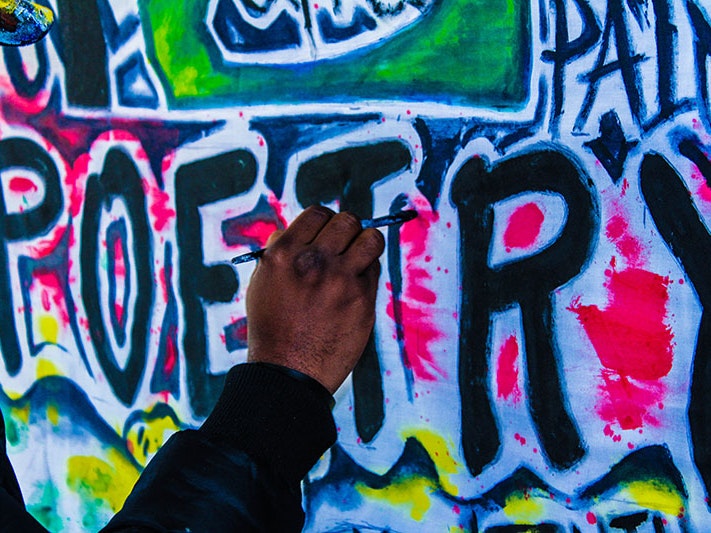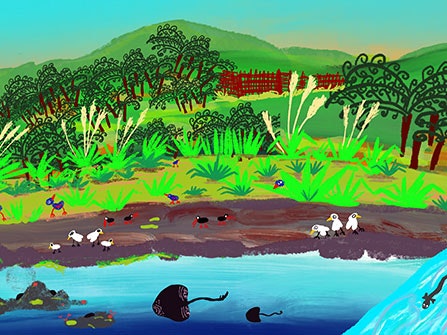
Rich task 2: Back for the future
Create a layered, artistic response to the story of the land beneath you and the community that surrounds you.
Free museum entry for New Zealanders and people living in New Zealand
Open every day 10am-6pm
(except Christmas Day)
Free museum entry for New Zealanders and people living in New Zealand
Examine a selfie portrait image and manipulate aspects of adornment to reflect on how identity is communicated.
We are manipulating images to reflect our personal identities within portraiture.
Through these activities, learners will:
develop visual ideas in response to studying Lisa Reihana’s work as it relates to identity and representation
explore and use artmaking conventions, applying knowledge of elements and selected principles, such as collage, overlay, scale, and repetition, to amend their selfie image.
Reihana uses a number of artistic devices to communicate identity within her fictional, historical, and biographical portraits. In this rich task, learners play with their own image to find ways in which they can ‘turn the volume up’ on expressing their identity visually.
In this activity, learners examine and manipulate their own portrait image to reflect on how their identity is communicated.
Ask learners to brainstorm who they are, where they are from, and what is important to them. Encourage them to think not just about the primary qualities of who they are, but also the small and specific things that make them ‘them’.
Prompts might include: what is the most important part of your identity? what patterns, sounds, landscapes, or places reflect who you are? what visual images reflect your ancestors or your elders? what visual images reflect your whānau and those who you love? when you think of yourself, is there one thing that stands out to you? what are the things that make you smile? where are you happiest?
Learners take a selfie with a plain background and look again at their brainstorm. What visual clues could they add to this photo to tell their story of identity a little louder?
Either open the photo in photo-editing software or print it out and manipulate it manually. Encourage learners to add layers over the top and in the background. Have a look through Te Papa’s Collections Online for taonga or textiles that may help learners to say something new about who they are.
For example, a learner may like hip hop music. Search ‘hip hop’ in Te Papa’s Collections Online and find DJ Raw’s turntable from the 1990s. A learner may feel an affinity with the Central Otago landscape. Look through Te Papa’s Collections Online and find a scenic photograph of Central Otago. Someone may have a memory of a tīvaevae at a grandparent’s house, and find a tīvaevae image. They may identify as Tūhoe and look through the Tūhoe-tagged collection items.
Let learners play with the collection items in relation to their selfie images, either digitally or manually, using collage and transparency, and experimenting with scale (enlarging or reducing), overlay, repetition, and text.
As with Reihana’s work, if it is possible, play with this on a large scale. What happens if a learner’s portrait is projected onto the wall? Use this as a way of exhibiting learners’ works, or use projection as a further step – getting learners to then trace back off their portrait image, with felt tip and butchers paper.
If it is possible, exhibit the completed portraits visibly so that whānau and community can share in their learners’ work. Learners may want their portraits to be accompanied by bio statements that explain what has been chosen and the ways in which this reflects who they are.
What did you add to your image to help tell your story? Is it true to you?
What would happen if a total stranger decided to portray you? Can someone else tell the world the true story about who we really are?
What are the strengths and weaknesses of using pictorial sources for information? What is missing from this portrait of you which is important for others to know? What other sources are needed for us to gain an understanding of someone’s identity?

Create a layered, artistic response to the story of the land beneath you and the community that surrounds you.

Respond to art through poetry, collaboration, and performance.

Inspire others with what you have done! Email us with your learning so we can celebrate and share your awesome mahi!